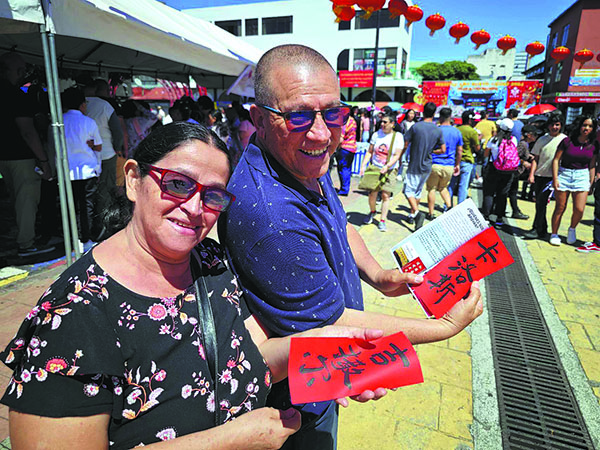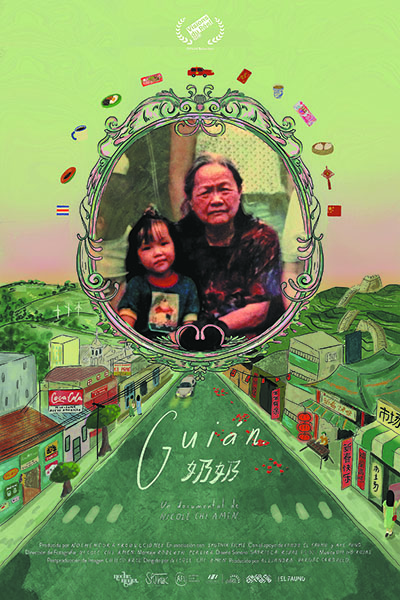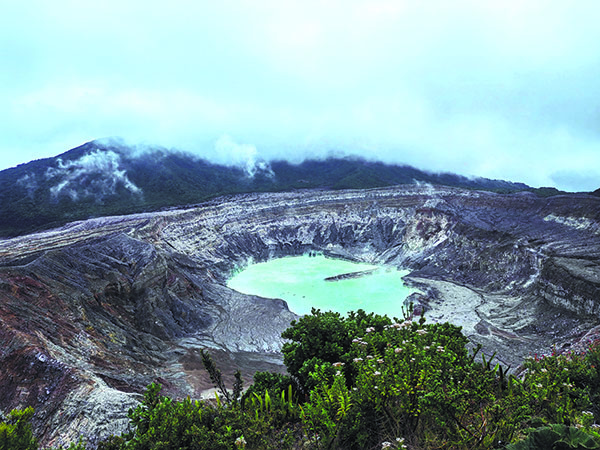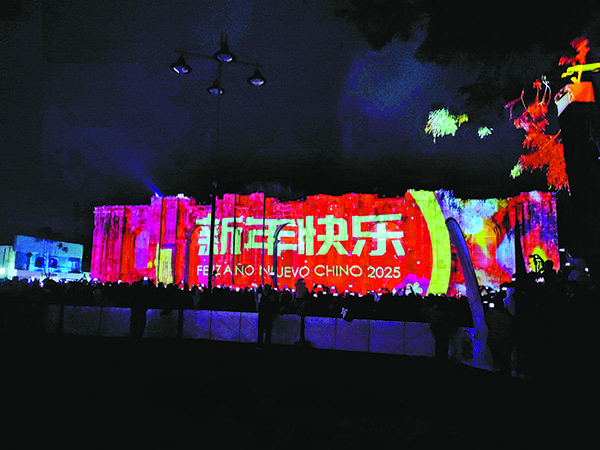Costa Rican filmmaker explores her Chinese identity through her late grandmother's life

Descendants of Chinese immigrants in Latin America often straddle two cultures: the one they live in and the one their parents or grandparents brought with them.
For Nicole Chi Amen, a filmmaker in Costa Rica, this has meant a cultural journey deep into the life and culture of her grandmother, and her life far away from her home.
Chi is one of several filmmakers in Costa Rica who have set out to understand the cultural divide that has shaped their families and the challenges they overcame in the decades after emigrating from China to the Latin American country.
"The beauty of making films is how the process evolves and how one evolves through it. I never expected to feel so empowered by the duality of my identity," said Chi. "I also didn't anticipate the connections I would make with people who've seen the film."

Chi's film, Guian, explores the themes that often define the lives of Chinese families that have emigrated to Latin America while highlighting the importance they place on their roots and traditions. Guian was what Chi and her relatives called her grandmother, whose Costa Rican name was Maria Funk.
The 76-minute film, which tells the story of Chi's journey to rediscover her Chinese grandmother's culture, premiered at the Mulan International Film Festival, held in Toronto, Canada, in August 2024.
It offers an intimate portrait of her grandmother's journey, which started in the county-level city of Enping, in the Chinese province of Guangdong.
READ MORE: Young Peruvians foster Sino-Peruvian ties
"Guian is a film born from a strong and unique bond with my Chinese maternal grandmother, with whom I was never able to have a conversation because we didn't share the same language," Chi, 32, said.
To make the film, Chi spent about a year and a half in China, meeting people who had been close to her grandmother, including her best friend, her younger brother, and a grandmother from her father's side.
The 2023 film not only provides a glimpse of life in China but also shines a spotlight on the lives of the Chinese-Costa Rican community.
"When I arrived in China, I thought I knew about Chinese culture because of my family," Chi said.
Instead, she experienced "a major culture shock" in Beijing. "Even the language didn't seem like Chinese to me. I had never heard Mandarin before," she said. Her grandmother and family spoke Cantonese.
"It wasn't until I got to (Guangdong) … that I started to feel more 'at home', as the food and the sounds seemed much more familiar.
ALSO READ: Singing their way to solidarity
"Everyone thought I was Chinese, and one of the first things I learned to explain was that I came from Costa Rica, a small country in Central America, because most people didn't know about my country," she said.

Chi's grandmother traveled some 15,000 kilometers from China to Costa Rica long before direct flights or fast global travel.
Her journey took place around the time the People's Republic of China was founded in 1949, marking the end of a conflict that had torn the country apart. At that time, there were only a few dozen Chinese people in Costa Rica. By 1963, the number had risen to more than 666 China-born residents.
Chi's grandmother owned a small grocery store in Alajuela's central market, but despite a lifetime of working in Costa Rica, she never learned Spanish. Instead, she spoke mostly Cantonese or her local dialect. The grandchildren, like Chi, never knew their grandmother's dialect.
ALSO READ: Musician gives the guitar a Brazilian heart
As a result, all communication was conveyed through gestures or relying on Chi's parents and others of their generation as translators.
Grandmother "dedicated herself to raising her children, so she communicated with the outside world through them," Chi said.
The older woman was not alone in this approach to the language. Chinese immigrants of her generation in Costa Rica tended to speak either Cantonese or their hometown dialects. Their descendants, immersed in the local Spanish, rarely learned them.
These personal, but often significant, idiosyncrasies drive Chi's documentary. While the film centers on a deeply personal story, Chi believes that the documentary is "universal" due to its exploration of themes and connections to the past, and its quest to discover the roots that shape a person's identity.

'Less alone'
"Sharing the film has become an exercise in feeling less alone in the world when you have these kinds of experiences — being the descendant of immigrants and often feeling out of place, always searching for where you belong," said Chi, who has established herself as an accomplished filmmaker.
She has received many accolades, including the Princess Grace Award for Emerging Artist in Film, the Directors Guild of America's Student Film Award for Outstanding Directorial Achievement, and the Austin Film Society's New Texas Voices Award.
Her work has been selected for festivals such as South by Southwest, Telluride Film Festival in the United States, and Visions du Reel International Film Festival in Switzerland.
Chi is not the only filmmaker exploring the links that bind Chinese immigrants in Costa Rica and their families to their native culture. The Chinese community accounts for about 45,000 of Costa Rica's 5 million people, making it one of the largest foreign-rooted communities in the country. As such, their culture has attracted a fair amount of interest.
READ MORE: Falling in love with Buenos Aires' tango music, dancing and sumptuous steaks
Kim Torres, a 31-year-old Costa Rican director, is also working on a project that revolves around a Chinese immigrant living in Manzanillo, known for its beaches and fishing.
Torres' film is about a Chinese woman, Dai, who operates a grocery store. Dai's store is among some 22,000 mom-and-pop shops across the country, and her story highlights the economic impact Chinese entrepreneurs have on Costa Rica.
Since the 1950s, this group of entrepreneurs has evolved from operating traditional grocery stores and restaurants to farming and agricultural industries to processing products like cocoa for export. Some small local industrial holdings also make everything from dried foods to pastries and rubber products.
History revisited
Like Chi, Torres had set out to explore the cultural identity of Chinese entrepreneurs.
The first Chinese immigrants arrived in Costa Rica in 1855 at the port of Puntarenas. At that time, there were about 77 of them, mostly working in the railroad or agriculture.
Their numbers have swelled over 170 years, expanding rapidly over the past couple of decades along with China's influence in the Latin American nation.
Costa Rica established diplomatic relations with China in 2007, hoping to attract more foreign investment. The two countries signed a free-trade agreement in 2010. Bilateral trade reached $4.4 billion in 2024, according to the Costa Rican Foreign Trade Promoter.
In 2018, Costa Rica signed a memorandum of understanding to jointly promote the construction of the China-proposed Belt and Road Initiative, and a year later, the country's Legislative Assembly approved the Law on the Celebration of Chinese Culture Day and the Incorporation of Educational and Cultural Activities, which encourages public and private educational institutions to promote Chinese culture.
It was the first country in the region to enshrine a Chinese culture day in law.
"The diversified cultural activities, such as mutual visits of artistic groups, virtual performances and exhibitions, help bridge the vast geographical distance, fostering mutual understanding between the peoples of both nations," then-Chinese ambassador to Costa Rica Tang Heng said in a speech in 2022 to mark the 15th anniversary of the establishment of diplomatic relations.

Preserving customs
The University of Costa Rica also hosts the first Confucius Institute in Central America. It is one of more than 40 across Latin America.
These links help support the more personal initiatives to preserve Chinese customs, cuisine and values.
One of the most visible ways in which Chinese culture is preserved and adapted is through food.
Over the years, Chinese dishes have been reimagined to account for local conditions and ingredients.
One such Costa Rican-inspired Chinese dish is zongzi, which is similar to tamales and is often made during Christmas.
Chi remembers eating zongzi, or dumplings, during the holidays alongside traditional dishes like duck. Her family also maintains other traditions, like distributing hongbao, or red envelopes, during the Chinese New Year, along with beliefs and customs about keeping a clean house or hair washing to mark the New Year.
ALSO READ: Sculptor's work takes Chinese culture to the world
"The importance of family and a special affection and respect for elders in my family also stems from Chinese culture," said Chi.
However, some traditions have faded over the years, and this is particularly noticeable among the third generation of her family.
More than showing lost customs, Chi said her film also explores some stereotypes such as the belief that "chop suey", a dish with stir-fried vegetables and meat, is a Chinese dish (it was invented in the US by immigrants), mispronouncing the letter "r" when speaking Spanish.
"This is why I decided to create an intimate portrait, putting myself in the center of the story, and the experience of my family in Costa Rica. For me, it is vital to present more dimensions than the stereotypes we are known for," said Chi.
The writer is a freelance journalist for China Daily.


